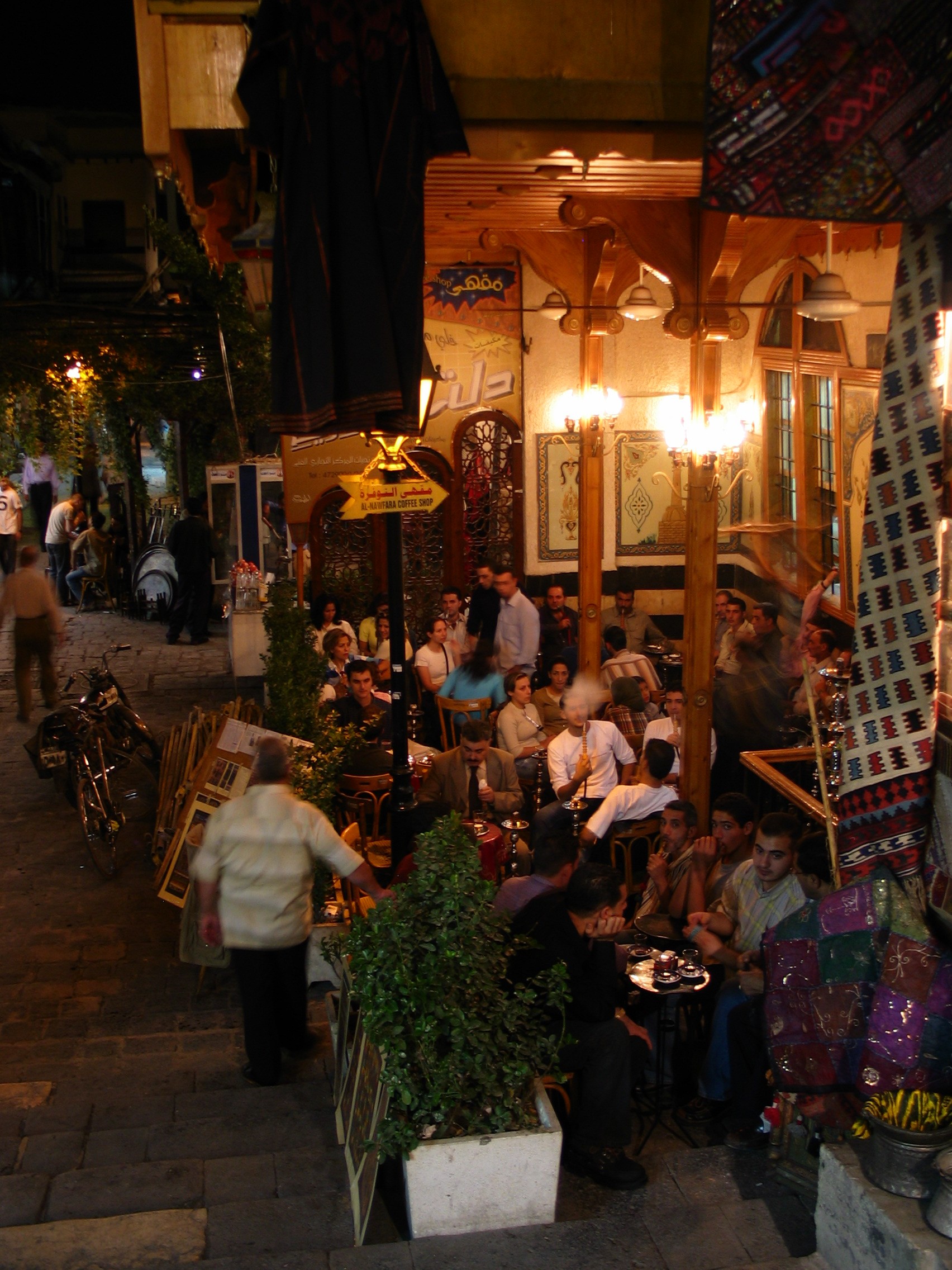The Story of Coffee
القهوة
IntroductionCoffee drinking is a widespread habit in modern living throughout the globe. Which country do you think of as the homeland of coffee: Brazil, Italy, Yemen or France?
|
|
|
|
Coffee from Yemen to America
| The coffee plant is believed to be native to the area now known as Yemen and Ethiopia. Both areas have their own myths about the discovery of the stimulant property of coffee. A Yemeni tale recounts the story of a man called Omar who was banished with his followers to the wilderness and managed to survive on boiling and eating the fruit of an unknown plant. The residents of the nearest town, Mocha, were amazed by this miraculous survival and named the plant Mocha. | ||||||
The dried berries were then transported to distant regions. People started enjoying the fruit after it was reconstituted in water, and they began to drink the remaining liquid.
The Rise and Fall of Mocha
In 1100 A.D, the first coffee trees were cultivated in Yemen. A strict policy forbade the exportation of any fertile beans in an attempt to prevent the cultivation of coffee elsewhere. Yemen consequently became the first producer and exporter of coffee, through the famous port of Mocha in the Southwest of the country. The bean from this area became known as café Arabica.
|
However, the glory that Yemen and the port of Mocha enjoyed for close to six centuries started to fade when the Dutch smuggled a coffee plant in 1690 and cultivated it commercially in their colonies, Ceylon and Java. Although the Yemeni coffee bean is still highly appreciated, coffee production in Yemen now constitutes no more than a fraction of coffee production world wide. |
Coffee in The Middle Ages: To Drink or Not To Drink?
Coffee raised controversies in the Christian as well as Muslim lands in medieval times. In 1511, Khair Beg, the governor of Mecca, tried to ban coffee for fear that its influence would foster opposition to his rule. The sultan, however, decided that coffee was sacred and ordered the execution of the governor. When coffee arrived to Western Europe in 1600 with Venetian merchants, the Pope Clement VIII was urged by his advisers to consider the favorite drink of the Ottoman Empire part of the infidel threat. However, the Pope decided to "baptize" it, making it an acceptable Christian beverage.
Medieval Coffee Shops Go West
In 1453, coffee drinking was introduced to Constantinople (modern Istanbul) by the Ottomans. The world's first coffee shop, Kiva Han, opened in Constantinople in 1475. Coffee grew very important in Ottoman times to the point it became legal for a woman to divorce her husband if he failed to provide her with her daily quota of coffee.
In 1645, the first coffeehouse opened in Italy. In 1652, the first coffeehouse opened in England while the first coffeehouse in Paris opened in 1672.
In the Americas, it was Captain John Smith who was believed to have introduced coffee to North America in 1607. Coffee drinking gained so much popularity that the Boston Tea Party of 1773 made drinking coffee a patriotic duty in America. In 1727, coffee growing reached Brazil, today’s largest coffee producer.
Coffee in the Arab World
|
In Arab countries, coffee enjoys great popularity. Coffee is the preferred drink savored at home as a daily ritual, as well as in coffee shops. Coffee drinking is an occasion that elicits social, artistic and political interchange. In homes, coffee is routinely presented to visitors as a sign of hospitality whether the visit was formal or informal. Traditionally, women liked to gather around coffee with neighbors and relatives as part of their routine social networking. Occasionally during those gatherings, التبصير or reading the future in the coffee cup was practiced. With the change of lifestyle and social structure, such gatherings have become less and less frequent. However, women still enjoy a cup of coffee outside the house, in a coffee shop or in the work place as well as at home. |
Traditional Coffee Shops: Coffee, Hookah and Cards
Traditionally, coffeehouses in the Arab world have been a major meeting place for men outside the place of worship, hence their great influence on Arab societies.
Friends, neighbors and relatives gather in coffee shops to play cards, dominos, and traditional Backgammon over coffee and conversation. In the past, coffee shops were the primary entertainment site where regulars enjoyed hearing tales recounted by story-tellers, watching puppet master shows and smoking Hookah. In addition to their entertainment function, coffee houses were a place to negotiate business and social deals, resolve conflict among family and neighbors, and forge friendships and alliances. Different social, economic, and denominational groups equally mingled in coffee houses.
Coffee shops throughout the Arab world were also the arena of intellectual and artistic creativity. Vehement discussions took place regularly among poets, writers, journalists and intellectuals who held circles in a designated area of the café, attracting curious and knowledge-thirsty listeners. Literary masterpieces were created in coffee houses by renowned national or pan-Arab writers. The famous Egyptian writer and Nobel Prize winner, Najib Mahfouz, was frequently seen sipping coffee and writing in Cairene cafés.
The influence of cafés further extended into politics. Some of these cafés were the main meeting place for activists and national liberation movements across the Arab world in the first half of the twentieth century. Political parties used to convene in cafés to organize actions such as strikes, demonstrations, and election campaigns. For example the “اللواء” café in Egypt was the headquarters of the nationalist party of Mustafa Kamal, the founder of modern Turkey.
Cafés Today
|
Nowadays, coffee houses no longer hold their above illustrated central influence. In keeping with the various changes experienced by Arab societies, coffee shops have taken on new, but less central roles. They are mainly now a hangout place, attracting a new clientele of young men and, more recently, young women. The recent popularity and spread of international cafés in the Arab world such as Starbucks is also noticeable. |
The traditional functions of cafés have been fragmented and assigned to new sources and spaces for entertainment and socialization. The spread of social and sports clubs, night clubs, movie theatres, and the great popularity of television took over from coffee houses as the major sources of entertainment in today’s Arab societies. Furthermore, the diminution of the role of the coffee house in the promotion of artistic and intellectual expression reflects the changes within the artistic community. Artists may now opt for fancier places such as discussion salons or elegant restaurant. Political discussions are no longer the primary concern of the clientele of nowadays’ cafés. These discussions are now held on television talk shows and within confined private circles. Colleges and universities became the primary stand where youth express their political opinions and organize. Despite the new role that coffee houses have now assumed, coffee remains a central and popular drink in all the new social spaces, whether in restaurants, clubs, universities, salons and most importantly inside every home.






